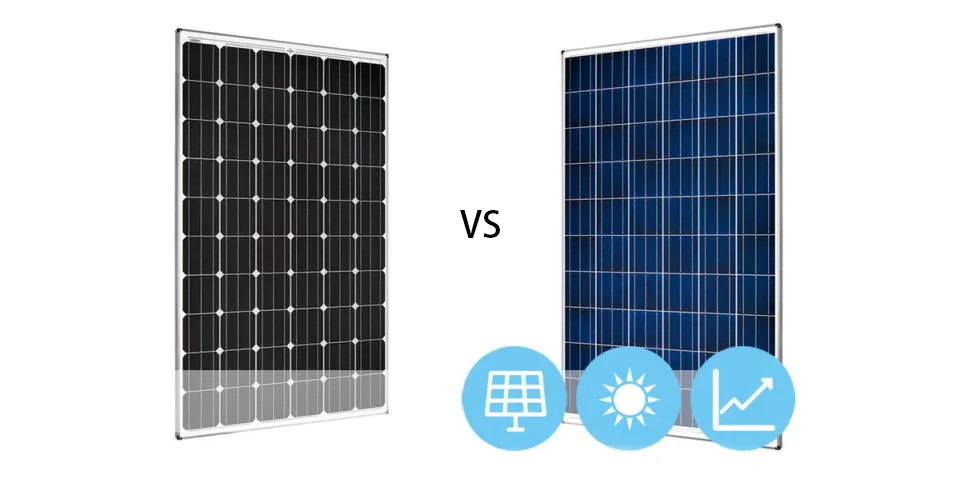When you decide to install a photovoltaic system, you are faced with the choice between these two types: let’s see the differences together.
Monocrystalline or polycrystalline photovoltaic panels? Which are the best? Those who have decided to focus on solar energy for their home or business punctually ask themselves this question.
The answer is very simple and almost obvious: there is no one type better or worse than the other, but there are some differences between the two.
Monocrystalline photovoltaic panel
Monocrystalline PV modules can be recognized by their dark blue, almost black coloring.
The cells have beveled edges and are made of monocrystalline silicon crystals, all oriented in the same direction.
This causes energy production to be higher in perpendicular light.
They are generally more efficient-that is they need less surface area than polycrystalline modules to generate the same amount of energy.
Polycrystalline photovoltaic panel
The production of polycrystalline or multi-crystalline silicon modules is less expensive than that of monocrystalline modules, which is also reflected in the final price.
The cells are iridescent blue, consisting of randomly oriented silicon crystals. This causes them to have lower efficiency when hit perpendicularly by the sun’s rays.
However, this flaw is also peculiar: they can use sunlight better throughout the day.
Amorphous photovoltaic panels
There are also amorphous silicon modules, which are more flexible than the previous ones but have a lower yield of about 30 percent due to the special process by which they are produced.
Amorphous silicon modules are not composed of layers. They are created by placing a thin sheet of silicon, measuring thousandths of a millimeter, onto a glass or plastic surface. This creates a dark, uniform appearance.
Photovoltaic cells are not included. Photovoltaic cells consist of a layer of glass or plastic, with a thin layer of silicon applied uniformly. The silicon is only thousandths of a millimeter thick. The cells have a homogeneous dark coloring.
They are on the market both in the traditional rigid structure and in flexible rolls, which are useful for special architectural applications.
Differences between the two types of photovoltaic panels
Wanting to identify the main differences between the two types of modules, these concern the degree of purity of the silicon used and the dependence on temperature variations.
Monocrystalline silicon panels perform better at low temperatures and are more efficient than polycrystalline modules at lower solar intensity. In contrast, polycrystalline modules yield more at high temperatures.
Another major difference concerns the price of the panels, which is higher for monocrystalline than polycrystalline.
Monocrystalline or polycrystalline photovoltaics: which one to choose?
In conclusion, which module is better to choose? The answer is simple: it depends! There is no best type in an absolute sense.
Choosing the ideal solar panel depends largely on the individual’s needs. If cost-savings are a priority, polycrystalline panels are usually more affordable. Monocrystalline silicon modules may be the best option when space is limited or higher power output is desired.
Comparing different models and manufacturers of PV panels is important.
Polycrystalline modules are more efficient than some monocrystalline modules.
Monocrystalline modules react better to high temperatures than some polycrystalline panels.
In fact, considering the various panels on the market, it can be said that the efficiency of the two types is almost equivalent.
In addition, it should be kept in mind that all the other components besides the panels contribute to the system’s efficiency: inverters, optimizers, and so on.
There is no reason to choose a system based on the monocrystalline-polycrystalline distinction. You need to pay attention to the quality and reliability of manufacturers and installers, which, together with your available budget, are the most important variables.
It is beneficial to contact an expert in the field when installing a photovoltaic system. A professional can suggest the most appropriate solution based on the customer’s individual requirements.












